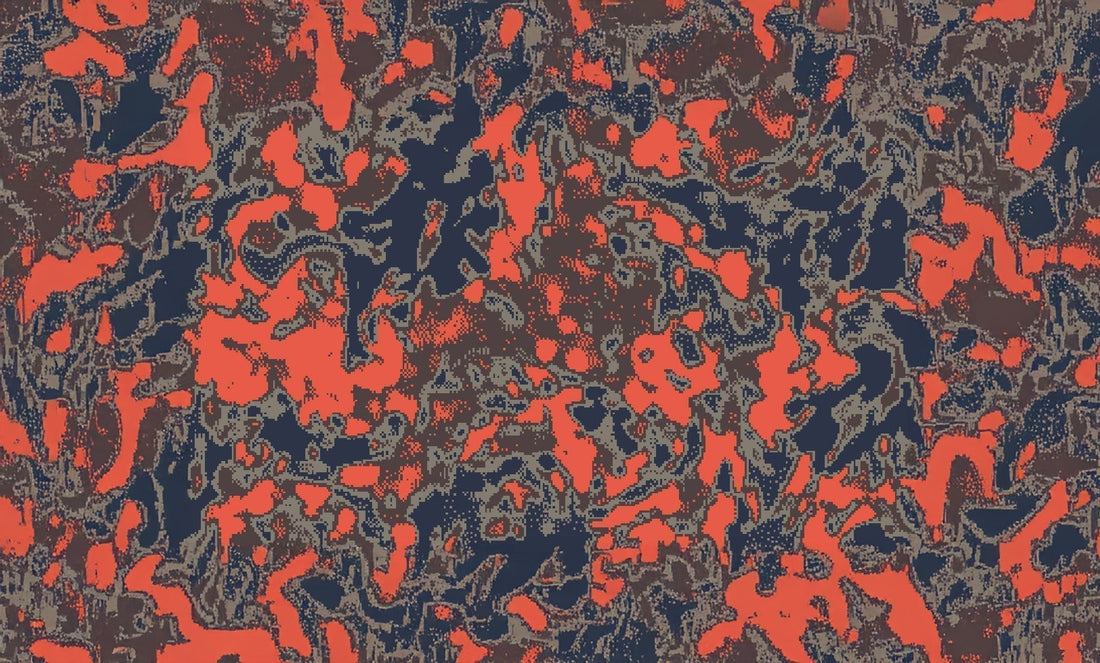
Disappear: Algorithms and Aesthetics
This 032c feature examines how U.S. military research into disappearance and concealment extends beyond the battlefield into digital systems, aesthetics, and cultural forms. It traces how camouflage concepts, algorithmic invisibility, and visual disruption developed in armed forces environments continue to influence civilian design, art, and media, reinforcing the notion that concealment is not just a tactical necessity but also a cultural signal.
Guy Cramer stands at the center of this discussion. Widely regarded as a purist in the world of camouflage, his work embodies the discipline, restraint, and precision that have long defined the field. But Cramer’s reputation as a purist is matched by his refusal to remain within the boundaries of convention. His research challenges the expectation that camouflage must be fixed, predictable, or standardized. Instead, he develops adaptive and deliberately unresolved methods of concealment, tools that embrace instability and fluidity as design principles. In his practice, camouflage is no longer about producing a single solution; it is about exploring a moving target, continuously recalibrated to shifting terrains, sensors, and perceptions.
This willingness to lean into the unknown reflects a sharp break from the rigidity that once defined military camouflage programs. Where past doctrines emphasized uniformity and permanence, Cramer’s work thrives on unpredictability and flux. He treats uncertainty as a productive space, one where concealment can evolve without the burden of precedent. In doing so, he recasts camouflage as a living system rather than a finished object—an approach that resonates with contemporary design culture as much as with military science.

032c’s decision to profile Cramer underscores the magazine’s own avant-garde tendencies. Known for bringing marginal practices into cultural focus, 032c has long framed technical and subcultural obsessions as aesthetic phenomena worthy of deep analysis. In highlighting Cramer, 032c positions camouflage not only as a tactical utility but as a cultural obsession, one that operates at the intersection of visibility, identity, and power. The magazine’s editorial approach insists that camouflage is not neutral—it is charged with political, aesthetic, and symbolic weight.
To extend this discussion, I have included a demonstration of Guy Cramer’s Quantum Stealth project. While not part of the original feature, it provides additional context for understanding the speculative and experimental dimensions of his research.

The pairing of Cramer and 032c illustrates a shared fixation. For Cramer, camouflage is both science and obsession, an endless pursuit of new methods to manipulate vision and perception. For 032c, the same fixation is refracted through culture, theory, and art, where concealment becomes a metaphor for broader concerns with systems, surveillance, and control. Both embrace camouflage as a field that cannot be fully resolved, one that continually oscillates between function and meaning, between battlefield and gallery, between practical survival and aesthetic experimentation.
This framing situates camouflage within a larger cultural and technological ecosystem. Cramer’s work aligns with historical developments in digital camouflage, perception science, and adaptive design, while also anticipating new applications in optical materials and algorithmic invisibility. 032c captures this dual movement—backward into the military archive and forward into speculative futures—where concealment becomes not only about disappearing from sight but also about navigating visibility in data-driven and media-saturated environments.
Full article available at 032c.
For more detailed information and further research, see the Resources repository.